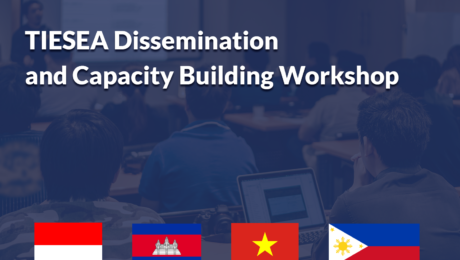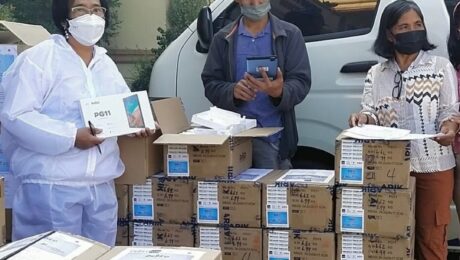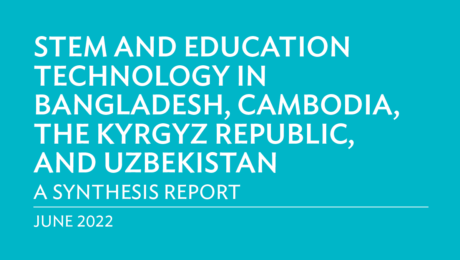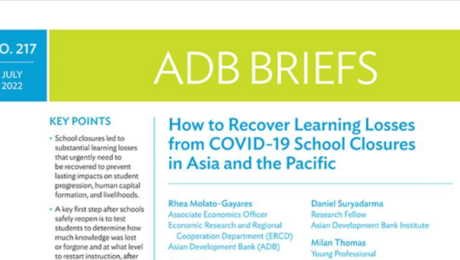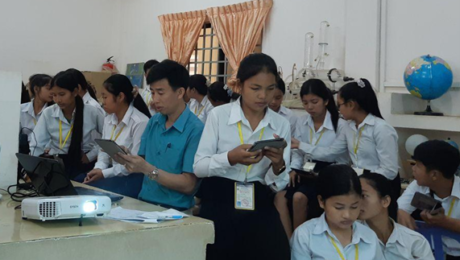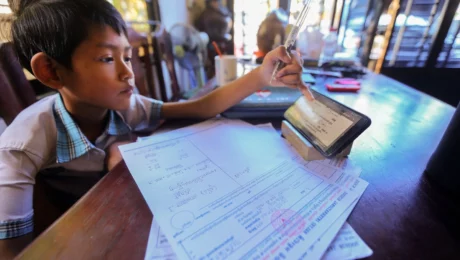TIESEA Dissemination and Capacity Building Workshop
The month of April was certainly a busy time for the TIESEA team as the Dissemination and Capacity Building workshops were held in each of the four TIESEA countries.
Each country workshop included a presentation on the findings of the TIESEA intervention in the country and a range of capacity-building presentations designed to enhance the skills and knowledge of educators and stakeholders who participated in the workshops.
The workshops featured a Teacher Storytelling presentation, where teachers who were part of the TIESEA intervention shared their experiences and learnings, bringing the program’s success stories to life.
A range of experts then delivered informative and engaging capacity-building sessions focused on AI for Education, AI for Assessment, and EdTech trends across Southeast Asia.
We were incredibly fortunate to have a local PhET expert lead participants through the PhET Interactive Simulations presentation, which included a hands-on activity.
Presentations:
Rethinking Future Digital Assessments -Jeffrey Xu
Cambodia
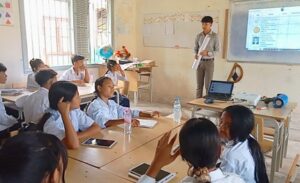
In Cambodia, ADB gave the opening remarks, followed by the Director of the General Secondary Education Department at the Ministry of Education, Youth and Sport, who highlighted the need to shift from passive to active learning as part of school reform. The final session of the day was a hands-on session with Ms. Nikita Kumar from Taghive. This presentation included a demonstration of the technology and how it is being used in the classroom.
Presentations:
Cambodia Draft Findings Kosal Chea EN
Cambodia Draft Findings Kosal Chea KH
Cambodia Teacher Story Telling EN
Cambodia Teacher Story Telling KH
Philippines
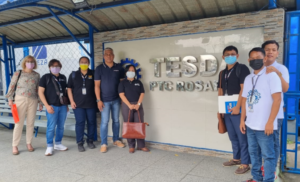
The Philippines workshop included a message of support from TESDA Secretary, Suharto T. Mangudadtu and an informative presentation from Ms. Redilyn Agub, the Chief for NITESD eTESDA, discussing the background and strategy for the Philippines intervention.
During the STEM and Project-based Learning session, Mr. Glenn Mendoza, PhET, emphasized the effectiveness of situation-based learning in conjunction with physical laboratory work. The final session of the day in the Philippines was an insightful presentation from Mr. Paolo Balinas of Amazon Web Services, discussing AWS AI strategy, AWS Academy, and AWS re/Start.
Presentations:
Philippines Draft Findings Zenaida Domingo
Viet Nam

In Viet Nam, participants had the privilege of listening to presentations from Mr. Kieu Huy Hoa, the Viet Nam Program Director from Khan Academy, who discussed how Khan Academy, a non-profit organization providing education access outside the classroom, is being deployed across Viet Nam. The final presenter was Ms. Minh Nguyen, the Director of Development for InterEdu, who talked about the Imagine Academy and how teachers and students in Viet Nam can participate.
Presentations:
Vietnam Draft Findings Nguyen Hong Hanh VN
Vietnam KhanAcademy Presentation
Indonesia
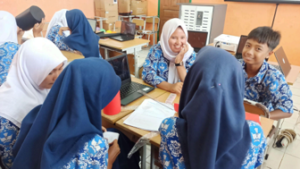
The Indonesia workshop opened with a speech from Dr. Iwan Syahril, Ph.D., Director General of Early Childhood Education, Primary Education and Secondary Education, at the Ministry of Education, Culture, Research, and Techonology (MoECRT). He emphasized that it is the lower 50% of the students in primary and secondary education that need the most assistance. He also commented that during COVID isolation, teachers missed the opportunity to share with other teachers socially and professionally.
The Indonesia workshop included a presentation from Mr. Byeongjo (Jo) Kong, Digital Technology Specialist with ADB, showcasing a case study on GenAI for teacher assistance in Bangladesh. And the final session of the day was a panel discussion facilitated by Ms. Anne Taylor, Team Leader of the TIESEA project, with panelists from ADB, AWS, Google, Microsoft and UNESCO-ICHEI.
Presentations:
Indonesia Draft Findings Cahya Ratih EN
- Published in All Reports, Articles, Related Content, Uncategorized
ADB Technical Assistance in the Philippines “EdTech Solutions for Last Mile Schools in COVID-19” featured in social media
TIESEA project is happy to share the feature of the ADB Edtech Solutions in Last Mile Schools TA in the Philippine Country Office social media:
ADB EdTech Solutions for Last Mile Schools in COVID-19 provided the following:
– WiFi LAN antennas and solar panel systems in 21 last mile schools;
– 3,500 tablets to secondary students; and
– Digitized learning materials in English, Math, and Science for secondary students.
To access ADB Philippine Country Office social media: Twitter | Facebook | Instagram
The ADB Technical Assistance Edtech Solutions in Last Mile Schools (TA 6670-PHI) is supporting the Department of Education (DepEd) of the Philippines in operationalizing the Basic Education Learning Continuity Plan (LCP), which will enable students to continue learning through blended learning modalities during the coronavirus disease (COVID-19) pandemic. The TA will build the DepEd capacity and support distance education by developing content, training teachers, and piloting education technology (edtech) solutions to ensure that secondary school students have access to quality education throughout school year (SY) 2020/21 and beyond. The pilot will use low-cost tablets to be connected to a local area network (LAN) supported by a solar-powered battery antenna, and target learners in selected school divisions. The content will be accessible nationwide through DepEd platforms. More information at https://www.adb.org/projects/54404-001/main.
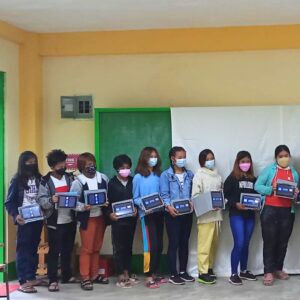
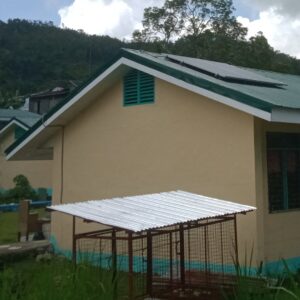
- Published in Related Content
STEM and Education Technology in Bangladesh, Cambodia, the Kyrgyz Republic, and Uzbekistan
This publication focuses on the state of science, technology, engineering, and mathematics (STEM) education and education technology (EdTech) in four developing member countries (DMCs) of the Asian Development Bank (ADB): Bangladesh, Cambodia, the Kyrgyz Republic, and Uzbekistan. It presents studies conducted from May 2020 to May 2021, along with situation analysis reports on EdTech and describes the state of information and communication technology (ICT) in the general education subsectors (primary and secondary) of the four DMCs. It discusses findings from the country studies, identifies gaps and potential intervention areas, and provides policy and intervention recommendations.
STEM Education
Findings from a survey of STEM teachers yielded a wealth of data on 11 subscales:
(i) syllabus in teaching
(ii) assessment
(iii) textbooks
(iv) preservice teacher training program
(v) inclusion of ICT
(vi) students’ interest
(vii) professional development programs
(viii) pedagogy
(ix) project work
(x) innovations in education and laboratory
(xi) design and technology workshops
Based on the survey samples, perception ratings by the teachers on the state of STEM education in their schools and countries are not high. In addition, further findings were gathered from the qualitative responses of teachers to four open-ended questions:
(i) three aspects that teachers are already good at
(ii) three challenges they face in teaching STEM in school
(iii) two improvements that schools can make to improve teaching and learning in their STEM subjects
(iv) one way in which the country can become strong in STEM education
A survey of school leaders also yielded a wealth of data on five subscales:
(i) school leadership
(ii) school improvement
(iii) relationship with national education authorities
(iv) relationships with other stakeholders
(v) professional development of teachers
Perception ratings by school leaders on the effectiveness of education in their schools and countries are not high. The qualitative responses of school leaders to four open-ended questions also highlighted further findings. The questions focused on the following:
(i) three things that are working well in schools
(ii) three challenges faced by schools
(iii) two improvements schools can make to improve teaching and learning
(iv) one way in which countries can become strong in education
Examination of internet resources as well as confirmatory discussions with stakeholders indicate the absence of science centers set up in the classical manner. Also absent are nongovernment organization (NGO)-based scientific academies and scientific societies in the four DMCs. This shows a big gap as well as an opportunity to identify and develop complementary resources that could effectively contribute to institutionalizing STEM education through a network of critical stakeholders in the DMCs, as done by other successful countries.
A comparison of STEM education in the four DMCs with Finland and Singapore shows that there are several areas for improvement, mainly in relation to preservice teacher education, teacher professional development, STEM education practices, the presence of external providers of STEM education, the establishment of a high bandwidth access to internet in schools, and the promotion of research activity levels of teacher education institutes.
In light of the findings, suggestions to improve the state of STEM education in the four DMC include the following:
(i) Improve students’ interest levels in science and mathematics.
(ii) Ensure that STEM teachers attend regular in-service courses as part of their professional
development and enhance latest developments on STEM education.
(iii) Improve preservice and in-service teacher education in STEM subjects to enhance
pedagogical practices that contribute to improvement in student learning outcomes.
(iv) Further develop the research expertise of academic staff at teacher education institutes.
(v) Establish science centers to popularize STEM.
(vi) Form NGO-based scientific societies to further boost activity levels of STEM education.
(vii) Promote integrated STEM education initiatives through low-cost initiatives.
(viii) Significantly increase the internet bandwidth in schools.
Given ADB’s recognition of STEM education in improving pedagogical practices and learning outcomes, particularly of girls and disadvantaged and marginalized students, some suggestions for further work are also provided. Most of these relate to organizing workshops in relation to the proposed suggestions for improving the state of STEM education in the four DMCs, organizing various courses for preservice teacher educators and other trainers of STEM subjects, forming local committees with ADB representatives to oversee the implementation of some recommendations, and establishing and strengthening knowledge partnerships with centers of excellence with proven expertise in STEM education, and providing some seed funding to jump-start the suggested initiatives.
The two surveys on STEM teachers’ views about STEM and school leaders’ views of the education system have good psychometric validity and reliability. As a next step, these can be used to map the state of STEM education in other DMCs, with some fine-tuning in phrasing to suit local contexts.
EdTech
With the pervasive adoption and usage of ICT in every sphere of life, mastery of those technologies becomes a fundamental requirement for work in the 21st century. Technologies in education systems or so-called “education technologies” (EdTechs) are providing new opportunities for students, teachers, education officers, and families to enhance learning and equity-at-scale by creating engaging, inclusive, and individualized learning experiences.
ADB commissioned the studies on Bangladesh, Cambodia, the Kyrgyz Republic, and Uzbekistan to gain insights on the current state of EdTech in the general education sector and how it is adapted and used in facilitating the learning outcomes and 21st century employability skills. The studies aimed to fill gaps in knowledge (including the early developments associated with the coronavirus disease [COVID-19] pandemic) as well as map the existing body of knowledge to inform ADB’s five-pillar assessment framework. The studies are also geared toward developing methodologies for collecting information on the digital learning readiness of DMCs.
The five domains and dimensions of the research framework are the following:
(i) Infrastructure. The situation related to the state of the ICT infrastructure in the country, including its quality and accessibility to students. Four key components are evaluated: internet connectivity, devices, power networks, and broadcasting.
(ii) Government. The situation related to enabling legislation and government policies and actions (laws, policies, funding, plans, strategy, and road maps) to support the role of EdTech in enhancing education outcomes. It specifically looks at the following four areas: policies and funding, curriculum, education performance measurement, and preservice training.
(iii) Schools and teachers. The situation related to the capacity of schoolteachers and school administrators. The key areas studied are teacher capacity in EdTech; in-service training; equipment and software in schools; and governance (school policies, budget, monitoring for quality learning outcomes).
(iv) Parents and students. The quality of home or community environment in terms of facilitating or enabling the achievement of student learning outcomes. These include digital literacy of students, connectivity and devices at home, online access to curriculum content, digital skills, and community support.
(v) Providers. The insight is about the quality of EdTech systems and providers and education sector partnerships. It includes a review of learning management, e-learning systems, online content, integrators, developers, and sponsors.
The most important finding was the need for shifting to a technology-inclusive ecosystem approach that would enable EdTech to transform education, away from the piecemeal and siloed approach seen in many DMCs. EdTech is not about simply replacing the current face-to-face mode of teaching and learning. It is about digitizing teaching, learning, and administrative processes while promoting adaptive or personalized learning through a collaborative process that combines the power of technology (data and evidence), with creative pedagogical practices that support learning and equity at scale.
It is paramount for educationists to cross boundaries and interact with a variety of stakeholders because success in EdTech delivery depends on understanding and implementing beyond the normal capacity of one government agency. EdTech requires new ways of envisioning education systems and enabling interaction between students and teachers, and curricula must be adjusted as content, delivery style, and organization also transform.
Read the full article here.
- Published in Related Content
How to Recover Learning Losses from COVID-19 School Closures in Asia and the Pacific
If left unaddressed, these learning losses threaten to create a generation of students with diminished lifetime economic prospects, which in turn will lower future individual and national productivity. The brief outlines complementary strategies that education authorities and teachers in the region can take to recover learning losses. It emphasizes the importance of accurately determining the extent of knowledge losses, tailoring teaching based on the student’s level, focusing on foundational skills, and providing quality in-service teacher training.
Read the full article here.
- Published in Related Content
Learning loss, School Recovery and the Education Futures
As part of its regular online briefings the ADB, in July, published How to Recover Learning Losses from COVID-19 School Closures in Asia and the Pacific[1], the paper makes a strong case for an approach to learning recovery that involves wholescale organisational change, not simply grafting on remedial measures to the existing broken systems – the recommendations embrace the use of technology, but they also point to the need for significant reorientations in curriculum design and a modernization in the way teachers operate.
Across the globe the Covid-related school closures since 2020 resulted in 170 million, or more students having no access to regular learning opportunities, with the consequential huge losses in learning. Across SE Asia, students’ school attendance was only around 80% of normal, between the first quarter of 2020 and the last quarter of 2021 resulting in the chances of meeting the UN Sustainable Development Goals for education slipping further away. Research by the Centre for Global Development[2] has shown how the learning losses associated with school closures have disproportionately affected the poorest and most socially disadvantages children.
The school closures served to reinforce the need to create alternatives to conventional models of schooling that consist of a teacher is in direct control of the learning of many students – often 50 or more, in a custodial classroom. Educational Technology (EdTech) has its part to play, but as we have seen, access to digital resources and the devices to use these resources is unevenly spread. Mass broadcast technologies, such as radio and TV, were used by many education ministries in SE Asia to promote remote learning, but these were often used to little effect as students lacked the learning skills to be able to drive their own learning and most teachers were unable to move away from their regular mode of transmissive delivery in lecture style. Nonetheless, there are a few examples of EdTech being used creatively to promote new learning. In Cambodia, students have benefited from hand-held tablet devices with access to digital resources to enhance their learning and understanding of the STEM subjects.
Whilst there have been some undoubted successes in using technology to overcome learning losses, in general, many teachers in the SE Asia region have struggled to integrate EdTech into their normal professional practice. It is not just a matter of low levels of digital literacy amongst the teaching workforce, more important in the shift to more learner-centric modes of education, which do not involve teachers directing learning at all times.
Encouraging students’ understanding about their own learning – so-called ‘metacognition’, and being able to drive and motivate themselves to make progress, is the single most influential and cost-effective means to raise standards. Empirical research by the Education Endowment Foundation (EEF)[1] in the UK in 2018 proved this most conclusively.
So, professional development, along with a reprioritization of the curriculum and enhanced integration have to be taken all together in a combined way to have the desired impact on school recovery. The ADB paper summarizes the steps to school recovery as follows:
- A key first step after schools safely reopen is to test students to determine how much knowledge was lost or forgone and at what level to restart instruction, after which attention should focus on regularly tracking the progress of learning.
- Teaching based on the student’s level, with the help of teaching assistants, tutors, or education technology (edtech), is crucial for learning recovery, as it has proven effective in improving learning outcomes.
- Prioritizing foundational skills, extending instruction time, and encouraging the re-enrollment of dropouts are also important for learning recovery.
- Quality in-service teacher training is needed to support changes in pedagogy.
The TIESEA project in its interventions in Cambodia, Indonesia, The Philippines and Viet Nam is following these steps in order to determine ‘what works in EdTech in SE Asia’. All of the country pilot projects have teacher professional development, and curriculum reform at the very center of the work – EdTech is then used as a tool to facilitate and promote the changes.
TIESEA will be feeding back the major findings at an international conference in the region in September 2023: watch this space, and follow these blogs for further updates!
[1] https://www.adb.org/sites/default/files/publication/808471/adb-brief-217-learning-losses-covid-19-school-closures.pdf
[2] Moscoviz, L. and D. K. Evans. 2022. Learning Loss and Student Dropouts During the COVID-19 Pandemic: A Review of the Evidence Two Years after Schools Shut Down. CGD Working Paper. No. 609. March. Washington, DC: Center for Global Development.
[3] https://educationendowmentfoundation.org.uk/public/files/Toolkit/complete/EEF-Teaching-Learning-Toolkit-October-2018.pdf- Published in Blog, Related Content
Related dynamic, global links about successful use of EDTECH
EdTech has been used successfully in developing settings. This require though targeted strategies that are contextualised for the capabilities and limitations of the context in which these are deployed, and aligned to the affordances of the particular Ed Techs in question.
Below are as set of dynamic, global links related to this Project about the successful use of EdTech that can be explored. These websites were included as being global, dynamic and thus changes frequently. These sites list publications, papers, articles, reports, presentations and other resources; events like webinars, conferences and forums; blogs; newsletters; working papers; current themes; people and projects to connect with; statistics and analytics; and success stories and challenges.
Related Links:
Development Asia – ADB
https://events.development.asia/
Digital Technologies in Education – World Bank
https://www.worldbank.org/en/topic/edutech
Digital Technology – ADB
https://blogs.adb.org/archive/subject/315
Edtech Center – World Education
https://edtech.worlded.org/
EdTech Hub
https://edtechhub.org
EdTech Update
https://www.edtechupdate.com/
Education – Center for Global Development (CGD)
https://www.cgdev.org/topics/education
EducationLinks – USAID
https://www.edu-links.org/index.php/topics/information-and-communication-technology
EduTech blogs – World Bank
https://blogs.worldbank.org/edutech
EDUtech Talks
https://edutechtalks.com/
eLearning Industry
https://elearningindustry.com/
Explain Everything – Edtech Bloggers
https://explaineverything.com/blog/teaching-trends/edtech-bloggers-to-follow-back-to-school/
Global EdTech
https://global-edtech.com/
ICT in education – UNESCO
https://en.unesco.org/themes/ict-education
ICTworks
https://www.ictworks.org/
Knowledge Hub – ICDE
https://www.icde.org/knowledge-hub
Mobiles for Education (mEducation) Alliance
https://meducationalliance.org/
OAsis Open Access Repository – COL
http://oasis.col.org/
SEAMEO INNOTECH (Regional Center for Educational Innovation and Technology)
https://www.seameo-innotech.org/
- Published in Related Content
Strategy 2030: Achieving a Prosperous, Inclusive, Resilient, and Sustainable Asia and the Pacific
Asia and the Pacific has made great strides in poverty reduction and economic growth in the past 50 years. ADB has been a key partner in the significant transformation of the region and is committed to continue serving the region in the next phase of its development.
Under Strategy 2030, ADB will expand its vision to achieve a prosperous, inclusive, resilient, and sustainable Asia and the Pacific, while sustaining its efforts to eradicate extreme poverty.
- Asia and the Pacific has made great strides in poverty reduction and economic growth in the past 50 years, but there are unfinished development agendas. #Strategy2030
- Under the new #Strategy2030, ADB will sustain its efforts to eradicate extreme poverty while expanding its vision of a prosperous, inclusive, resilient, and sustainable Asia and the Pacific
- ADB will combine finance, knowledge, and partnerships to fulfill its expanded vision under the new #Strategy2030
View the brochure in other languages:
| Azeri | German | Myanmar | Thai | |
| Bahasa | Italian | Nepali | Urdu | |
| Chinese | Japanese | Pashto | Vietnamese | |
| Dari | Lao | Russian | ||
| French | Mongolian | Tetum |
ADB’s Strategy 2030: Responding to a Changing Asia and the Pacific
Contents
- Executive Summary
- Introduction
- Changing Landscape and Challenges
- ADB’s Vision and Value Addition
- Guiding Principles for ADB’s Operations
- Differentiated Approaches to Groups of Countries
- Operational Priorities
- Expanding Private Sector Operations
- Catalyzing and Mobilizing Financial Resources for Development
- Strengthening Knowledge Services
- Delivering through a Stronger, Better, and Faster ADB
- One ADB
- Appendix: Stocktaking of ADB Operations and Summary of Consultations
Additional Details
| Type | |
| Subjects |
|
| Pages |
|
| Dimensions |
|
| SKU |
|
| ISBN |
|
- Published in News, Related Content
How Teachers Teach: Comparing Classroom Pedagogical Practices in the Asia and Pacific Region
The brief draws together evidence on teaching practices in 18 economies in Asia and the Pacific and compares this with assessments of learning outcomes, including student perceptions of interactive teaching practices. The analysis reveals generally poor teaching across large parts of the region. It also highlights some whole-class approaches that appear to foster higher-order thinking skills, showing that there is not one universal approach to effective teaching.
As policy makers consider how to tackle the learning crisis, it is important to note that online learning and other uses of technology are unlikely to improve learning outcomes in the absence of good teaching. Overall, this paper adds to the evidence base showing the critical need to focus on improving teaching practice in order to get children learning.
Additional Details
| Authors | |
| Type | |
| Series | |
| Subjects |
|
| Countries/Economies |
|
| Pages |
|
| Dimensions |
|
| SKU |
|
| ISBN |
|
| ISSN |
|
- Published in News, Related Content
Regional: Technology-Enabled Innovation in Education in Southeast Asia
The proposed knowledge and support technical assistance (TA) will conduct a diagnostic of what works in education technology (EdTech) in Cambodia, Indonesia, the Philippines, and Viet Nam. It will identify at what level technology solutions can be used based on ‘EdTech Readiness’ of countries, and pilot EdTech interventions accordingly. The TA builds on an ongoing regional TA on innovation in education sector development, which also focuses on Cambodia, Indonesia, the Philippines, and Viet Nam. The ongoing regional TA assessed the impact of the fourth industrial revolution (4IR) on labor markets by examining two economically important sectors in each country. The proposed TA builds on one of the key lessons from the ongoing regional TA: the need to leverage technology to provide trainings and skills development.
Latest Project Documents
| Title | Date |
|---|---|
| Technology-Enabled Innovation in Education in Southeast Asia: Technical Assistance Report | Dec 2020 |
Read the full article here.
- Published in News, Related Content
Education is in Crisis: How Can Technology be Part of the Solution?
By Paul Vandenberg, Kirsty Newman, Milan Thomas
Digital technologies and EdTech could play a role in addressing the learning crisis underway in Asia and the Pacific.
A learning crisis affects many developing countries in Asia. Millions of children attend school but are not learning enough. They cannot read, write, or do mathematics at their grade level, and yet they pass to the next grade, learning even less because they have not grasped the previous material. The magnitude of the crisis is staggering: in low- and middle-income countries more than half of children are not learning to read by age 10.
At the same time, there is an emerging revolution in learning brought on by digital technologies. These are collectively referred to as educational technology or EdTech. The coincident emergence of a problem in education and a new approach to learning naturally makes us ask how one may be a solution for the other.
Edtech may be one part of the solution – but it should be a means not an end. Our guiding principle should be to first diagnose what is going wrong in a system and then identify which solutions are best suited to solve those problems.
Some causes of the learning crisis are well understood. The poor quality of teaching is a key factor. Teachers often lack subject knowledge and have not had adequate training. There are ways in which technology could address this – and so EdTech may be equally valuable in teaching teachers as it is in teaching students. By offering distance learning, EdTech can provide in-service training or combine online and in-person training (blended learning).
There is also evidence that teachers need better incentives. The idea is that that they can teach well but are not motivated to do so. It is not clear how EdTech can address this problem. Digitized school management systems could better track teacher performance (by tracking their students’ performance) and then linking to pay or other incentives. However, the main need is to design the incentive system; digital applications may only make that system more efficient.
Computer-assisted learning is the direct means by which EdTech can help students. It can be seen as a partial solution for two fundamental learning crisis problems: addressing students at different learning levels and completing the syllabus. A classroom contains students with a range of baseline learning levels and teachers are often incentivized to teach to the upper stratum, leaving many students behind. Furthermore, teachers are pressured to cover the syllabus by year’s end. They move on to new material even if students have not mastered previous lessons. This also leaves students behind.
The solution to both problems is, of course, more tailored teaching, but a teacher is hard-pressed to provide one-on-one tutoring to 30 or 40 kids. EdTech might help provide one-to-one instruction (e.g., one student to one tablet) so pupils can learn at their own level and pace. The evidence from rigorous assessments (largely in the United States) is that packages that use artificial intelligence to adjust to a student’s level can improve results, especially in math.
However, we need to be cautious. Most of the evidence comes from contexts in which the quality of teaching is already quite good and is much above the average in developing countries. Digital systems can also help increase the efficiency of formative assessment and make it more likely that such assessment will be conducted. Tracking of students’ learning, through data collection and analysis, can help to better monitor a student’s learning level and provide level-appropriate teaching and remediation.
Computer-assisted learning is the direct means by which EdTech can help students.
Edtech software, introduced in conjunction with other reforms, holds some promise. One notable success is Mindspark in India, which improves math and Hindi learning. It has been evaluated as an after-hours supplement and combined with human teaching assistance. More assessments of programs would be helpful.
There is also evidence that low-tech interventions for “teaching at the right level” can also have large impacts on learning. Careful analysis is needed to determine whether high-tech or low-tech solutions are best, given that low tech is less costly, and finance is a constraint in poor countries.
The COVID-19 pandemic has given a big push to EdTech. We can learn from these experiences but need to keep them in context. EdTech is being used to overcome the need to social distance. Teachers are teaching by video but not necessarily teaching better than when standing in front of a classroom. Zoom fatigue is a problem. More mass open online courses are being offered and are being taken up – but much of this is not for basic education and therefore does not address the learning crisis.
Supporting EdTech solutions comes with four caveats. First, new initiatives need to be well-designed to address specific weaknesses. Low-quality teacher training delivered partially online is no better than low-quality in-person training. The same applies to computer-assisted learning.
Second, computer-assisted learning is often used in schools or in after-hours programs at or near schools. Delivering as distance learning is trickier. It requires hardware and connectivity at home, which is not available to children in low-income households in developing countries and even developed ones.
Third, EdTech programs used outside normal classroom hours adds to the time children spend learning. This is good but it is not always clear whether the benefits are coming from EdTech, per se, or simply more time spent learning. Nonetheless, gamification and other techniques may make children want to spend more time learning.
Finally, let us keep in mind that good learning outcomes can be achieved without EdTech. Developed countries got results before the advent of EdTech. So too did good schools in developing countries.
To be effective, EdTech must address key causes of the crisis and be part of a larger package of reforms. Those reforms include teacher training, incentives, monitoring, teaching at the right level, remediation for underperforming students, and others.
Digital technologies have changed our lives in many ways, mostly for the good. EdTech could do the same by playing a role in addressing the learning crisis.
- Published in News, Related Content
- 1
- 2
